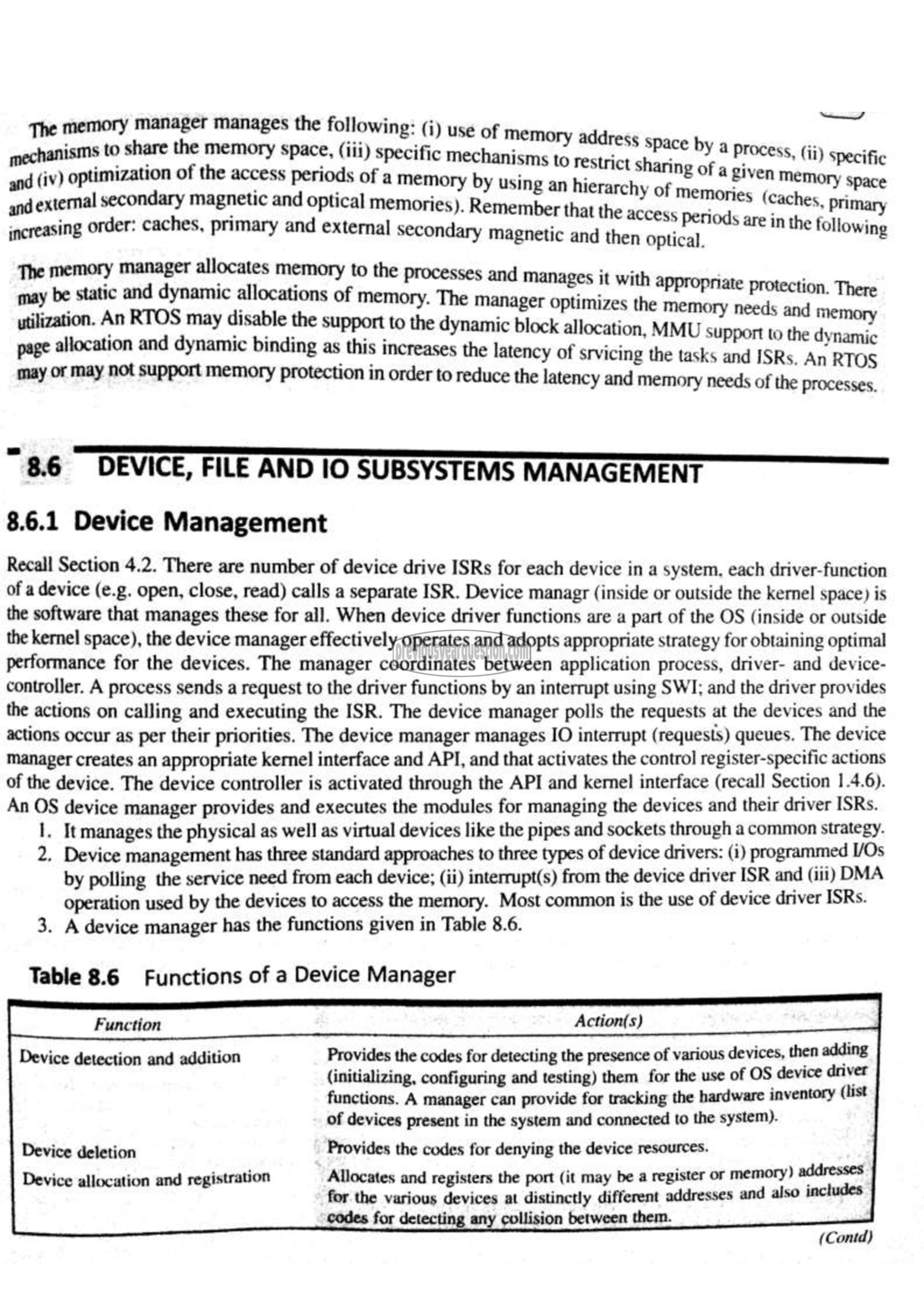APJ ABDUL KALAM TECHNOLOGICAL UNIVERSITY Previous Years Question Paper & Answer
Semester : SEMESTER 6
Subject : Embedded System
Year : 2018
Term : MARCH
Scheme : 2015 Full Time
Course Code : EC 308
Page:49
5 7 +~
The memory manager manages the following: (i) use of memory address Space b
isms to share the memory space, (iii) specific mechanisms to restrict sharin
and (11) optimization of the access periods of a memory by using an hierarch :
and external secondary magnetic and optical memories). Remember that the a
increasing order: caches, primary and external secondary magnetic and the
1 4 process, (ii) specific
Of a given Memory spac
y of memories ( caches, pri aia
06655 Periods are in the following
1 optical.
The memory manager allocates memory to the processes and manages it with ⊳
may be static and dynamic allocations of memory. The manager omen اساي سح
utilization. An RTOS may disable the support to the dynamic block allocation, MMU support to the dynamic
page allocation and dynamic binding as this increases the latency of srvicing the tasks and ISRs. An RTOS
may or May 10 support memory protection in order to reduce the latency and memory needs of the processes.
5 ل க க க ರೃ | க க ச கை சைகசைசை
8.6 DEVICE, FILE AND 10 SUBSYSTEMS MANAGEMENT
8.6.1 Device Management
Recall Section 4.2. There are number of device drive ISRs for each device in a system, each driver-function
of a device (e.g. open, close, read) calls a separate ISR. Device managr (inside or outside the kernel space) is
the software that manages these for all. When device driver functions are a part of the OS (inside or outside
the kernel space), the device manager effectively operates and adopts appropriate strategy for obtaining optimal
performance for the devices. The manager coordinates between application process, driver- and device-
controller. A process sends a request to the driver functions by an interrupt using SWI; and the driver provides
the actions on calling and executing the ISR. The device manager polls the requests at the devices and the
actions occur as per their priorities. The device manager manages IO interrupt (requests) queues. The device
manager creates an appropriate kernel interface and API, and that activates the control register-specific actions
of the device. The device controller is activated through the API and kernel interface (recall Section 1.4.6).
An OS device manager provides and executes the modules for managing the devices and their driver ISRs.
1, It manages the physical as well as virtual devices like the pipes and sockets through ೩ common strategy.
2. Device management has three standard approaches to three types of device drivers: (i) programmed 1/05
by polling the service need from each device; (ii) interrupt(s) from the device driver ISR and (iii) DMA
operation used by the devices to access the memory. Most common is the use of device driver ISRs.
3. A device manager has the functions given in Table 8.6.
Table 8.6 Functions of a Device Manager
a நனை என்ன eee ee
Function Action(s)
Device detection and addition Provides the codes for detecting the presence of various devices, then adding
(initializing, configuring and testing) them for the use of OS device driver
functions. A manager can provide for wracking the hardware inventory (list
of devices present in the system and connected to the system).
Device deletion Provides the codes for denying the device resources.
Device allocation and registrauon Allocates and registers the port (it may be a register or me pide
+ for the various devices at distinctly different addresses and also includes
codes for detecting any collision between them.
(Contd)
